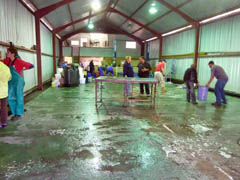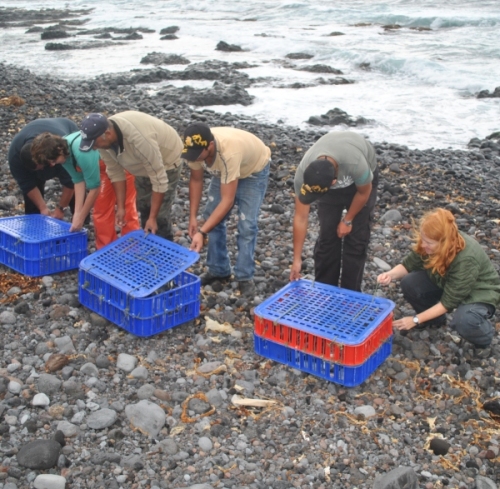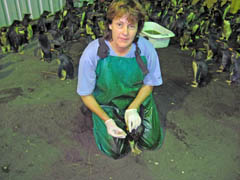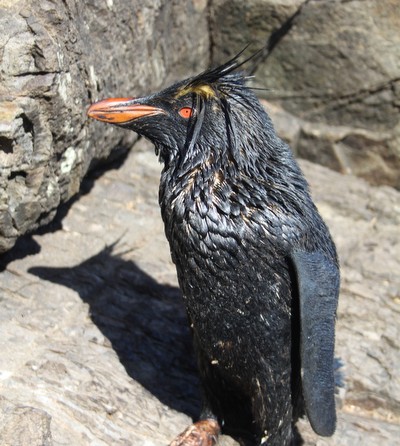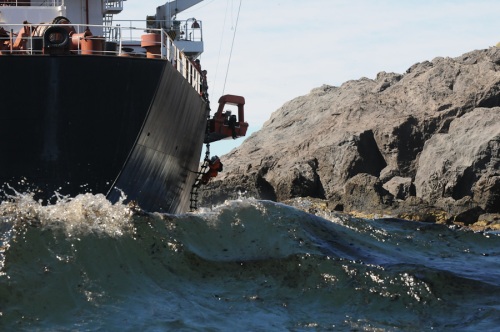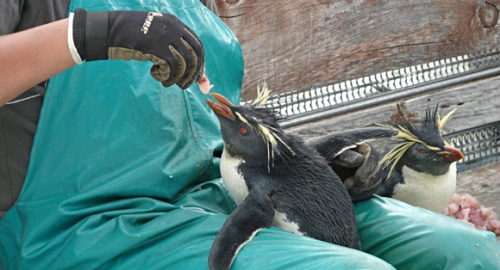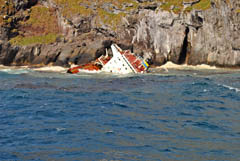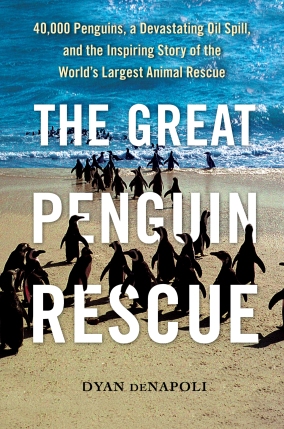Well, it’s been a while since my last post – work-related travel and several other projects have kept me extremely busy since my last report on the oil spill at the Tristan da Cunha island group. While I sorely wish I had better news to report regarding the valiant efforts to save the Rockhopper penguins oiled in the MS Oliva oil spill on March 16th, the painful reality is that a very large number of the affected birds have died.
What’s even more difficult to accept is the fact that these majestic seabirds didn’t have to die. We currently have the means and the expertise to save oiled penguins – however it was impossible to get experienced rescuers or needed supplies to this remote location in time to save these birds. But it shouldn’t be that way.

Oiled and ailing Rockhopper penguins in truck. Photo by Katrine Herian, RSPB
While the crew and owners of ships are ultimately responsible for ensuring the safe navigation of their vessels, wherever shipping lanes pass close to sensitive wildlife areas, we must be better prepared to deal with potential oil spills and the ensuing animal rescues. There should be established rescue facilities with trained staff at the ready to respond whenever an oil spill occurs. And I believe the onus should be on the shipping companies to pay for these facilities, the supplies and the staffing. After all, these are the parties responsible for oiling accidents – and the ones guilty of causing the deaths of hundreds of thousands of animals and the destruction of marine environments worldwide. The system is currently broken. And as long as petroleum-fueled vessels ply our oceans, we must have better systems in place to deal with these (often preventable) disasters.

Child feeding Rockhopper penguins at rehabilitation site at Tristan da Cunha. Photo by Tina Glass
The Rockhopper rescue at Tristan da Cunha is not yet completed. About 300 penguins, still undergoing rehabilitation, still linger at the three rehabilitation sites. A small number of islanders continue to work around the clock to save these ailing birds. On May 21st, 25 penguins were released, and on May 31st, another 120 birds were liberated from their pens on East Beach. A May 12th article from BirdLife International reports that there has been an 88% mortality rate for the birds that were rescued. (See the BirdLife article here: Gaining weight, but not yet waterproof: penguins still need care.) If this figure is accurate, this is truly a tragic and preventable debacle. Eighty-eight percent should have been – and could have been – the success rate, not the mortality rate. Please do not misinterpret my words as a reflection on the islanders and rescuers who went to help them deal with this unexpected disaster. They did everything in their power to save the oiled birds, and it is clearly not their fault that this rescue effort was not more successful. It is due to many circumstances far beyond their control. Which is why the current system needs to change.
It has been reported that the ship’s insurers will be paying for the penguin rescue effort and environmental clean-up. But that is not enough. Future long-term monitoring of the Endangered Northern Rockhopper penguin population at Tristan da Cunah will be necessary to determine the full impact of this oil spill. And this important conservation project will not be funded by the ship’s owners or insurers. These types of follow-up studies are essential for providing supporting evidence when trying to get new laws passed or protected areas established near sensitive wildlife areas. If you care about these beautiful birds and want to do something to help ensure their future survival, please donate generously to one of the rescue funds established in response to the MS Oliva oil spill. (See a list of these groups below.)
Thank you,
Dyan deNapoli – The Penguin Lady (www.thepenguinlady.com)
The Ocean Doctor (Dr. David Guggenheim): http://oceandoctor.org/ (Click on the green ‘donate now’ button in the right-hand column.) Or go to this link:Nightingale Island Disaster Penguin and Seabird Rescue Fund
Royal Society for the Protection of Birds: Nightingale Island Emergency Appeal
Foundation for Antarctic Research: Catastrophic Oil Spill – Tristan









